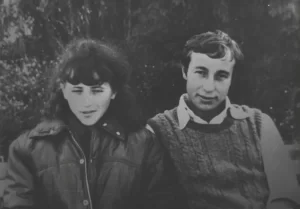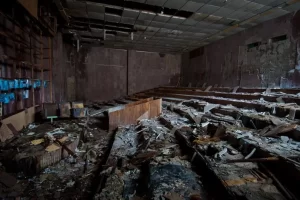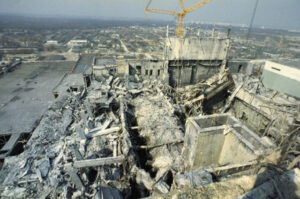
 On April 26, 1986, an explosion in the Number 4 reactor of the Chernobyl Nuclear Power Plant, near the city of Pripyat in the north of the Ukrainian SSR, close to the border with the Byelorussian SSR, in the Soviet Union. So began what is considered the worst nuclear disaster in history. The Chernobyl disaster is one of only two nuclear energy accidents that was rated at seven, which is maximum severity on the International Nuclear Event Scale. The other one was the 2011 Fukushima nuclear accident in Japan, which of course, hadn’t happened yet. The cost of this disaster would be an enormous cost an estimated 18 billion roubles, which is roughly US$83 billion today. The initial emergency response and subsequent mitigation efforts involved more than 500,000 personnel. With all that, it is considered the worst nuclear disaster in history. Strange how the 4th worst disaster can also be considered the worst. I suppose it is in the cost to mitigate the damage and loss of life.
On April 26, 1986, an explosion in the Number 4 reactor of the Chernobyl Nuclear Power Plant, near the city of Pripyat in the north of the Ukrainian SSR, close to the border with the Byelorussian SSR, in the Soviet Union. So began what is considered the worst nuclear disaster in history. The Chernobyl disaster is one of only two nuclear energy accidents that was rated at seven, which is maximum severity on the International Nuclear Event Scale. The other one was the 2011 Fukushima nuclear accident in Japan, which of course, hadn’t happened yet. The cost of this disaster would be an enormous cost an estimated 18 billion roubles, which is roughly US$83 billion today. The initial emergency response and subsequent mitigation efforts involved more than 500,000 personnel. With all that, it is considered the worst nuclear disaster in history. Strange how the 4th worst disaster can also be considered the worst. I suppose it is in the cost to mitigate the damage and loss of life.
Volodymyr Pavlovych Pravyk was a Soviet firefighter, was born in the town of Chernobyl on June 13, 1962. His mother, Natalia Ivanova Pravyk, was a nurse, and his father, Pavel Opanasovich Pravyk, a construction worker. Pravyk took charge of the initial efforts to extinguish fires following the Chernobyl Disaster. I don’t know what measures were taken to protect the workers from radiation exposure, but I would expect that it was little to no protection. I would also expect that the equipment they did have was not what it needed to be to save them from radiation poisoning. After the event was over, Pravyk was hospitalized with acute radiation syndrome. For him, any improvements in protection would come too late. He died on May 11, 1986, just sixteen days later. Even though they could not save him, they knew that his actions were heroic. Pravyk was posthumously awarded the Hero of the Soviet Union and the Order of Lenin by the Soviet Union, and later the Ukrainian Star For Courage (later known as the Order for Courage) in recognition of his efforts.
It was later determined that a routine test at the power plant had gone horribly wrong, causing two massive 
 explosions that blew the 1,000-ton roof off one of the plant’s reactors. The explosions released 400 times more radiation than the atomic bomb dropped on Hiroshima. The disaster killed two workers in the initial explosions. Within months, at least 28 more would be dead by acute radiation exposure. Thousands of people would eventually show signs of health effects from the fallout, including cancer.
explosions that blew the 1,000-ton roof off one of the plant’s reactors. The explosions released 400 times more radiation than the atomic bomb dropped on Hiroshima. The disaster killed two workers in the initial explosions. Within months, at least 28 more would be dead by acute radiation exposure. Thousands of people would eventually show signs of health effects from the fallout, including cancer.


Leave a Reply